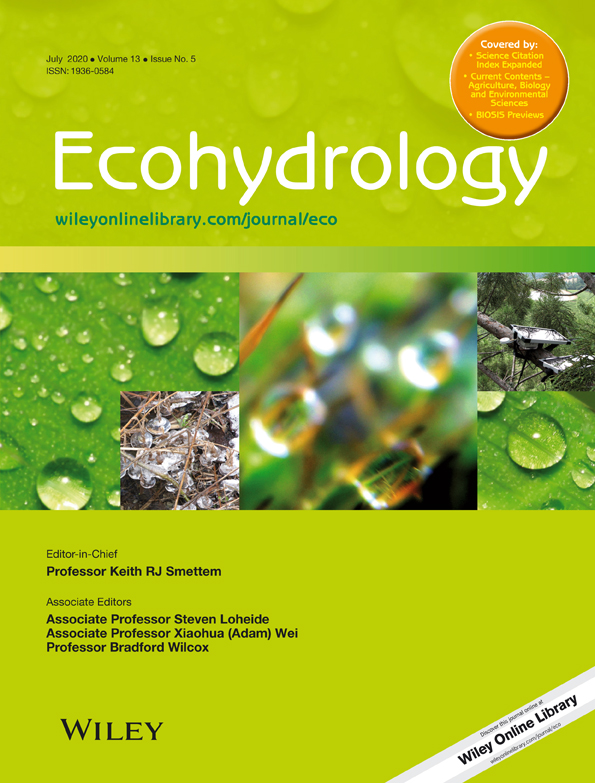Ver ítem
- xmlui.general.dspace_homeCentros Regionales y EEAsCentro Regional La Pampa - San LuisEEA San LuisArtículos científicosxmlui.ArtifactBrowser.ItemViewer.trail
- Inicio
- Centros Regionales y EEAs
- Centro Regional La Pampa - San Luis
- EEA San Luis
- Artículos científicos
- Ver ítem
Hydrological and productive impacts of recent land use and land cover changes in the semiarid Chaco: understanding novel water excess in water scarce farmlands
Resumen
Over the last decades, the rapid replacement of native forests by crops and pastures in the Argentinean semiarid Chaco plains has triggered unprecedented groundwater level raises resulting from deep drainage increases, leading to the first massive waterlogging event on records (~25.000 Ha flooded in 2015 near Bandera, one of the most cultivated clusters of the Chaco). In this paper, we link this episode to the ongoing deforestation and cropping scheme
[ver mas...]
Over the last decades, the rapid replacement of native forests by crops and pastures in the Argentinean semiarid Chaco plains has triggered unprecedented groundwater level raises resulting from deep drainage increases, leading to the first massive waterlogging event on records (~25.000 Ha flooded in 2015 near Bandera, one of the most cultivated clusters of the Chaco). In this paper, we link this episode to the ongoing deforestation and cropping scheme shifts through the combined analysis of remote sensing data, agricultural surveys, local farmer information and hydrologic modeling. From 2000 to 2015, the agricultural area of Bandera increased from 21% to 50%, mostly at the expense of dry forests. In this period, agriculture migrated from more intensive (i.e., double‐cropping) to more water‐conservative (i.e., late‐summer single crops) schemes, as a general strategy to reduce drought risks. These changes reduced regional evapotranspiration and increased the intensity of deep drainage in wet years. Contrasting cropping schemes displayed significant evapotranspiration differences, but all of them experienced substantial drainage losses (~100‐200 mm) during the wettest year (2014/15), suggesting that cropping adjustments have a limited capacity to halt the generation of water excesses. Nearly 50% of the cropped area in Bandera could not be sown or harvested following the groundwater recharge event of 2014/2015. In the ongoing context of shallow and rising water tables, the introduction of novel cropping schemes that include deep‐rooted perennials, to promote transpirative groundwater discharge, seems crucial to avoid the recurrence of water excesses and their associated dryland salinity risk in the region.
[Cerrar]

Autor
Giménez, Raúl;
Mercau, Jorge Luis;
Bert, Federico Esteban;
Kuppel, Sylvain;
Baldi, Germán;
Houspanossian, Javier;
Magliano, Patricio Nicolás;
Jobbagy Gampel, Esteban Gabriel;
Fuente
Ecohydrology (First published: 04 August 2020)
Fecha
2020-08
Editorial
Wiley
ISSN
1936-0584
1936-0592
1936-0592
Formato
pdf
Tipo de documento
artículo
Palabras Claves
Derechos de acceso
Embargado
 Excepto donde se diga explicitamente, este item se publica bajo la siguiente descripción: Creative Commons Attribution-NonCommercial-ShareAlike 2.5 Unported (CC BY-NC-SA 2.5)
Excepto donde se diga explicitamente, este item se publica bajo la siguiente descripción: Creative Commons Attribution-NonCommercial-ShareAlike 2.5 Unported (CC BY-NC-SA 2.5)

